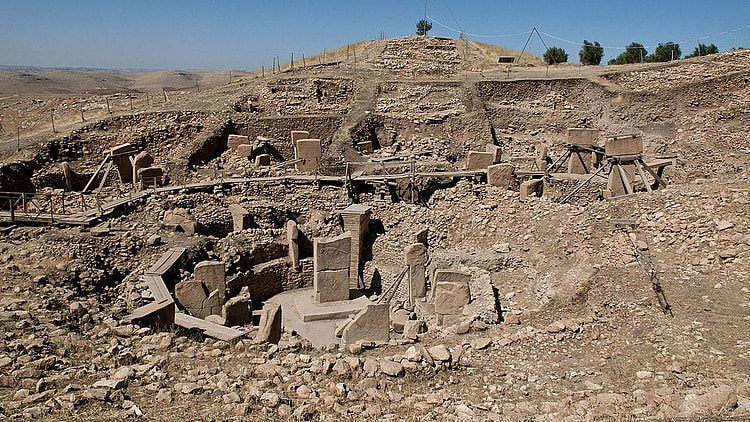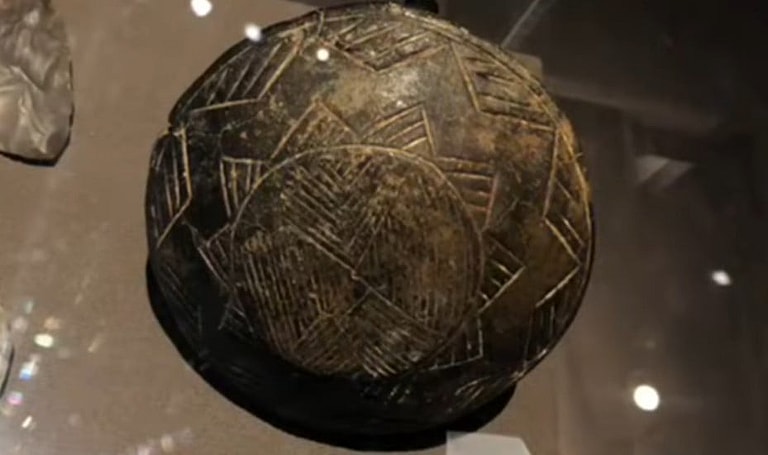
Ancient artifacts can tell the story of humanity and how we evolved technologically, spiritually, and emotionally. However, sometimes archaeologists find something so surprising that they are unable to explain their discovery.
Even after so many years, these are some of the top unexplained ancient artifacts from around the world. These items can range from small stone balls to documents that are still being studied. Here are the 15 most unexplained ancient artifacts.
Related: Rare Artifacts from the Ancient Egyptian Era
15. Stone Spheres
In Costa Rica, stone spheres are located on the Diquis Delta and on Isla del Cano, and are one of the most interesting ancient artifacts. The spheres are commonly associated with the extinct Diquis culture and are the best-known stone sculptures of the Isthmo-Columbian area.
According to acheologists’ hypothesis, the spheres could represent the solar systems or just be inspired by various stages of the sun and the moon as viewed with the naked eye, including setting or rising suns, and half moons.
Even with those theories, there are still several myths about these unexplained ancient artifacts. Some believe they came from Atlantis, the lost city. Some local legends believe that native inhabitants had access to a potion able to soften the rock, similar to limestone.
14. Neolithic Stone Balls

Neolithic stone balls, or simply carved stone balls, are petrospheres that date from the late Neolithic, which began nearly 12,000 years ago. These are mainly found in Scotland but also appear elsewhere like Ireland and Britain.
They’re usually found in a round, or even oval shape, and are pretty uniform in size. The balls range from having no ornamentation to extensive and highly varied engraved patterns.
In 2021, archaeologists were excavating a tomb at one of Scotland’s oldest known monuments and came upon two polished stone balls that were at least 5,500 years old. Due to their pattern, many are unsure of what they were used for, making them one of the many unexplained ancient artifacts found throughout the world.
13. Stone Labyrinth
The stone labyrinth of Bolshoi Zayatsky Island is a group of 13 labyrinths. While it lacks proper study, a research group theorizes that the labyrinths are about 2,500 years old according to their orientation, their supposed ritual use, and changes in the direction throughout history.
While most doubt that they’re that old, as a vast majority of labyrinths in the area date back to the Middle Ages, there is not enough evidence supporting or debunking the claim. But this still begs the question of who built them and for what purpose. These are some of the most interesting and unexplained ancient artifacts that are still a mystery to this day.
12. Derinkuyu Underground City

Derinkuyu, also known as Elengubu, is an ancient multi-level underground city in Turkey. The city extends to a depth of around 280 feet and is large enough to shelter 20,000 people together with their livestock and food stores.
It’s the largest excavated underground city in Turkey and is one of the several underground complexes found throughout Cappodicia, but why was it built, and who was the one that made it?
While not a feasible artifact that you can hold, Derinkuyu is one unexplained ancient artifact that poses many questions to historians. The underground city was only recently rediscovered in 1963 by an anonymous local who was losing his chickens, but there is still no answer as to why it’s there.
11. The Stonehenge
One of the most iconic and unexplained ancient artifacts that we’ve come across is Stonehenge. The prehistorical megalithic structure resides on Salisbury Plain in Wilshire, England. It consists of an outer ring of vertical sarsen standing stones, and inside is a ring of smaller bluestones.
The structure is believed to be constructed overall in several phases from 3100 BC to 1600 BC. While there are several theories on what it could be, like a burial ground, it’s one of the most famous landmarks in the United Kingdom, making it a British cultural icon.
Some theories even go as far as mythology and paranormal, with many historians being influenced by supernatural folklore in their explanations. Some legends hold that Merlin had a giant build the structure for him to magically transport from Mount Killaraus in Ireland, while others believe it’s the devil who is held responsible.
10. The Nazca Lines
The Nazca Lines of Peru are spectacular, but only when you check them out from the sky. They were first spotted by a commercial aircraft during the 1920s and 30s. There are hundreds of shapes that range from simple geometric lines to more complicated designs of animals, plants, and other figures.
The Nazca Lines are believed to be 2,000 years old and made by the people of the pre-Inca Nazca culture. It is believed that the tribes removed the red surface pebbles to show the lighter earth underneath and made designs of their choosing.
However, why they drew the lines remains one of the biggest mysteries globally, and there are many conspiracy theorists that float ideas about ancient astrology and alien landings. Some experts believe that the lines were probably a ritualistic communication method used to connect with Nazca deities.
9. GobekliTepe
This amazing archaeological discovery was made in 1994, in a rural area of Turkey known as GobekliTepe. This ancient discovery prompted many to question the evolution of civilization and led to new questions being asked about when humans started to first settle down into permanent towns to farm and build temples.
The site contains multiple rings of huge stone pillars with various types of animal scenes carved on them. This archaeological treasure dates all the way back to the 10th Millennium BC, and GobekliTepe is considered to be the oldest place of worship in the world.
However, evidence shows that the temple was built by tribes who were semi-nomadic hunters, most likely unaware of agriculture. Due to the discovery of GobekliTepe, archaeologists now question the exact time from when worshipping in a temple started.
8. Copper Scroll Treasure
Another archaeological mystery that is yet to be solved is the ancient copper scroll that was discovered at an archaeological site in Qumran, the West Bank. Discovered in 1952, it is believed that the scroll describes a massive hidden treasure of gold and silver. However, to date, no one has been able to decipher where this treasure might be or if it even exists.
The Copper Scroll was discovered along with the Dead Sea Scrolls. The scroll dates back over 2,000 years, when the Roman Empire was believed to have controlled the Quran settlement. The treasure is believed to have been hidden by locals to keep it from falling into the hands of the Roman forces.
7. Voynich Manuscript

One of the many unique finds of the 20th century was the Voynich Manuscript, which no one could read or decipher. An antique bookseller discovered the manuscript in 1912. The Voynich Manuscript is a 250-page book that is written in an unknown alphabet.
The book is also illustrated with various pictures that range from zodiac signs to medicinal herbs to female nudes. The book is currently kept at Yale University’s Beinecke Rare Book & Manuscript Library.
6. The London Hammer
Discovered in June 1936, this ancient hammer has been dated to over 400 million years ago, to the Ordovician period.
While there are some questions about the exact dating, according to those who have dated it, the hammer itself is allegedly 400 million years old. In fact, it is so ancient that a section of the handle has actually begun to turn into coal. However, many experts say it is a hoax… What do you think?
5. The Antikythera Mechanism
Known as the first mechanical computer in the world, the Antikythera Mechanism was found in a shipwreck off the island of Antikythera in Greece.
The Antikythera Mechanism was designed to calculate astronomical positions and is made up of a box with dials on the outside, and a complex assembly of gear wheels mounted on the inside. It is dated as being made sometime between 205 BC and 87 BC. Making it thousands of years old. Even today, archaeologists remain baffled by the Antikythera Mechanism.
4. The Dropa Stones
Stone disks known as Dropa Stones were discovered in 1938 in an archaeological expedition in Baian-Kara-Ula in China. When you first look at them, the Dropa Stones do not appear to be anything special, but as more research was done on them, the disks turned out to be very similar to phonograph records.
They were nine inches in diameter and had a circle cut into their centers. There was also a prominent spiral groove on the stones.
Believed to be over 10,000 years old, the stone’s spiral turned out to be composed of tiny hieroglyphics. Upon translation, the discs allegedly told the story of spaceships that crashed into mountains.
Check Out: Best Museums in New York City and What They’re Known For
3. The Baghdad Battery
This fascinating 2000-year-old battery comprises a 5-1/2 inch high clay vessel that contains a copper cylinder held in place by asphalt. Archaeologists found an oxidized iron rod inside the cylinder.
However, there is much debate on whether this device was actually used as a battery or simply a storage vessel.
2. Saqqara Bird
Discovered in 1898 during an excavation of the Pa-di-Imen tomb in Saqqara, Egypt, bird-shaped ancient artifacts made from the wood of a sycamore tree were found.
It weighs around 40 grams and has a wingspan of over seven inches. The artifact was dated back to 200 BC.
While the Saqqara Bird‘s exact function was never determined due to a lack of documentation, a lot of speculation persists even today over what its actual purpose was.
1. Piri Reis Map
Written on the skin of a gazelle, the Piri Reis map was discovered in 1929, one of the most unexplained ancient artifacts ever discovered. After much research, it was found to be a genuine map drawn by Piri Reis in 1513. Piri Reis was a famous admiral of the Turkish Navy.
The map depicts North Africa, Europe, the coast of Brazil, and many islands like the Canary Islands, the Azores, and even the mythical Isle of Antilia. Surprisingly, the map even showed Antarctica, which has been thought to have been discovered 300 years later.
The fact that it describes Antarctica’s location and topography in great detail puts into question the chronology of several discoveries.


